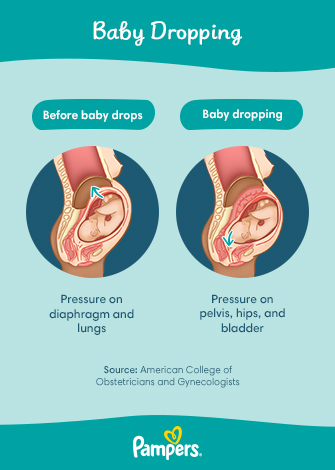
How to Get Baby to Drop: A Comprehensive Guide for Expectant Mothers
The anticipation of meeting your little one is an exciting and transformative journey. As your due date approaches, you may eagerly await the moment when your baby descends into the birth canal, a process known as "dropping." This article will provide a comprehensive guide on how to get baby to drop, exploring various methods and techniques to facilitate this natural process.
Understanding Baby’s Position
Before discussing methods to encourage dropping, it’s essential to understand the baby’s position within the uterus. Typically, babies are positioned head down, with their back facing your belly. This is known as the cephalic presentation. However, in some cases, babies may be positioned breech (bottom down) or transverse (sideways). If your baby is not in the optimal head-down position, it may be more challenging to get them to drop.
Methods to Encourage Dropping
1. Walking and Exercise:
Walking and other forms of light exercise can help encourage baby’s descent. Gravity assists in pulling the baby’s head down into the pelvis. Aim for at least 30 minutes of moderate-intensity exercise most days of the week.
2. Pelvic Tilts:
Pelvic tilts strengthen the pelvic floor muscles and help align the pelvis. Lie on your back with your knees bent and feet flat on the floor. Tilt your pelvis up, flattening your lower back against the floor. Hold for 5 seconds and release. Repeat 10-15 times several times a day.
3. Squatting:
Squatting helps open up the pelvis and create space for the baby to descend. Stand with your feet hip-width apart and slowly lower yourself into a squat position. Hold for 30 seconds and slowly return to standing. Repeat 10-15 times several times a day.
4. Yoga and Pilates:
Certain yoga and Pilates poses can help encourage dropping. Child’s pose, cat-cow pose, and downward-facing dog are all beneficial. Consult with a qualified instructor to ensure proper form and avoid any poses that may be contraindicated during pregnancy.
5. Acupuncture:
Acupuncture is an ancient Chinese medicine technique that involves inserting thin needles into specific points on the body. Some studies suggest that acupuncture may help stimulate the release of hormones that promote relaxation and uterine contractions, potentially aiding in baby’s descent.
6. Evening Primrose Oil:
Evening primrose oil is a natural supplement that contains gamma-linolenic acid (GLA), a fatty acid that may help soften the cervix and promote uterine contractions. It is important to consult with your healthcare provider before taking any supplements during pregnancy.
7. Raspberry Leaf Tea:
Raspberry leaf tea is a traditional herbal remedy that has been used for centuries to support uterine health. It contains compounds that may help tone the uterus and prepare it for labor.
8. Chiropractic Care:
Chiropractic adjustments can help correct any misalignments in the pelvis or spine, which may be hindering baby’s descent. A chiropractor can perform gentle adjustments to create more space in the pelvis and facilitate dropping.
9. Massage:
Prenatal massage can help relax the muscles and tissues surrounding the uterus, creating a more favorable environment for baby to drop. Focus on massaging the lower back, hips, and abdomen.
10. Water Therapy:
Spending time in warm water can help relax the body and promote circulation. Taking a warm bath or using a birthing ball in a pool can help encourage baby’s descent.
Signs That Baby Has Dropped
- Increased pelvic pressure: You may feel a sensation of fullness or pressure in your pelvis.
- Easier breathing: As the baby descends, there is less pressure on your diaphragm, making it easier to breathe.
- Frequent urination: The baby’s head pressing on your bladder may cause you to urinate more frequently.
- Change in abdominal shape: Your belly may appear lower and more rounded.
- Lightening sensation: You may feel a sense of lightness or relief as the baby moves down.
When to Seek Medical Attention
While dropping is a natural process, it’s important to seek medical attention if you experience any of the following:
- Severe pain or discomfort: If you experience sudden or severe pain, contact your healthcare provider immediately.
- Vaginal bleeding: Any vaginal bleeding during pregnancy should be evaluated by a healthcare professional.
- Premature dropping: If your baby drops before 36 weeks of pregnancy, it’s important to consult with your doctor.
- Baby’s position does not change: If your baby remains in a breech or transverse position after trying the methods described above, your healthcare provider may recommend further interventions.
Conclusion
Getting baby to drop is a natural process that can be facilitated by various methods and techniques. By following the tips outlined in this guide, you can increase your chances of a smooth and successful delivery. Remember to consult with your healthcare provider throughout your pregnancy to ensure the well-being of both you and your baby. As you eagerly await the arrival of your little one, embrace the journey and trust in the natural process of childbirth.
